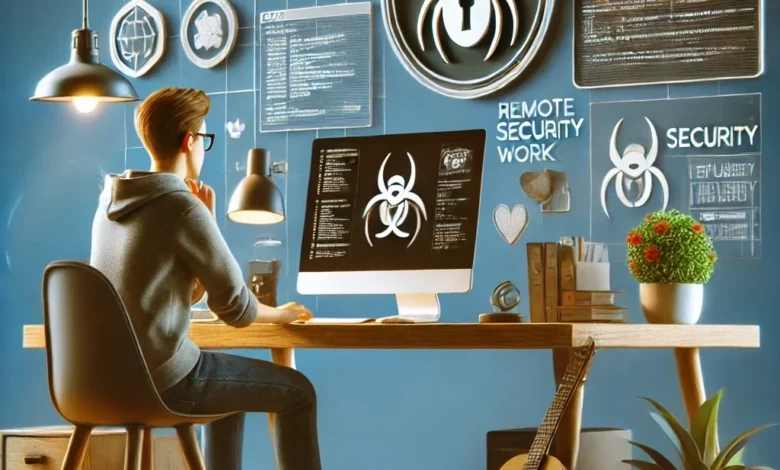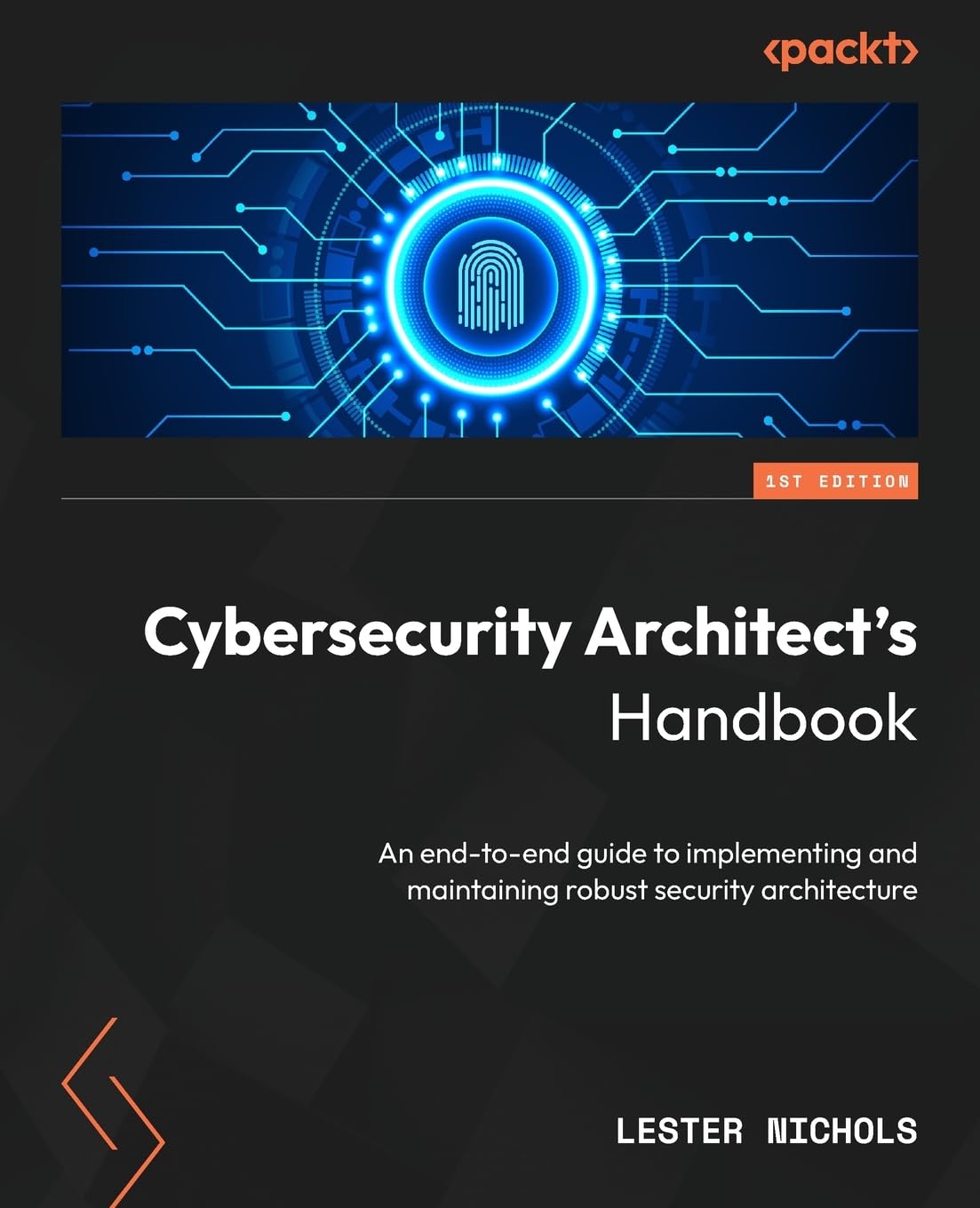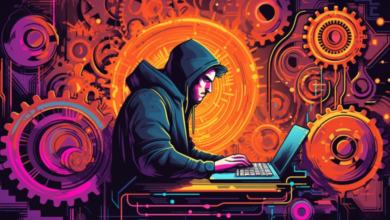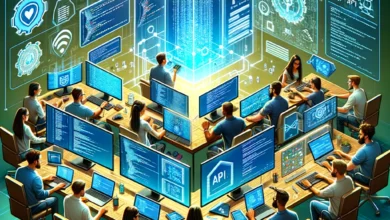Securing Remote Work: Best Practices in the Post-Pandemic World
Boosting Security for Remote and Hybrid Teams

Working from home has become the new normal for many of us, but it comes with its own set of cybersecurity challenges. Let’s dive into the risks of remote and hybrid work setups and why recognizing these threats is crucial for building strong security strategies.
Unsecured Home Networks: Think about your home Wi-Fi. Unlike your office network, it probably lacks the robust security measures needed to fend off cyber threats. Many home networks use default settings and weak passwords, making them easy targets for hackers. When you connect your work devices to these networks, you’re potentially opening the door to cyber criminals.
Increased Phishing Attempts: Phishing attacks are rising, and remote work has only amplified this threat. Cybercriminals exploit the fact that employees are more likely to click on links or open attachments from seemingly legitimate emails while working remotely. These phishing attempts can lead to malware infections, data breaches, and financial loss.
Challenges of Managing Remote Endpoints: Managing devices that are scattered across various locations is a logistical nightmare. Remote endpoints—laptops, smartphones, tablets—are often outside the protective bubble of your organization’s network. This makes enforcing security policies, applying updates, and monitoring for threats is harder. Each remote device is a potential entry point for cyberattacks.
Recognizing the Risks: Understanding these risks is the first step towards defending against them. When you know what you’re up against, you can take proactive measures to protect your digital workspace. Whether it’s securing your home network, being vigilant against phishing attempts, or ensuring that your devices are correctly managed, recognizing the threats is key.
Developing Effective Security Strategies: By acknowledging the cybersecurity challenges of remote work, you can start developing effective security strategies. This includes everything from using strong, unique passwords and enabling multi-factor authentication (MFA) to implementing regular software updates and training employees on cybersecurity best practices.
Embracing the remote work revolution doesn’t mean you have to compromise on security. Stay tuned as we explore best practices for securing your remote and hybrid work environments, starting with using VPNs for secure remote access. Let’s keep our digital spaces safe and sound, BugBuster crew!
Using VPNs for Secure Remote Access
Working remotely means connecting to the internet from various locations, and each connection is a potential vulnerability. Enter Virtual Private Networks (VPNs)—your digital shield against prying eyes. Here’s why VPNs are crucial and how to choose the right one for your needs.
How VPNs Encrypt Internet Connections: VPNs create a secure tunnel between your device and the Internet. When you connect to a VPN, your data is encrypted, meaning it’s converted into a code that can’t be easily deciphered by anyone who intercepts it. This encryption keeps your data safe from hackers, whether you’re working from home, a café, or even a public Wi-Fi hotspot.
- Data Protection: With a VPN, your internet activity is hidden from cybercriminals who might try to eavesdrop on your connection. This is especially important when accessing sensitive corporate resources or handling confidential information.
- Location Privacy: VPNs can mask your IP address, making it harder for attackers to track your location or launch targeted attacks. This adds an extra layer of privacy and security to your online activities.
Tips for Selecting a Reliable VPN Solution:
- Strong Encryption Standards:
- Look for VPNs that use robust encryption protocols, such as OpenVPN or IKEv2. These protocols ensure that your data remains secure and protected from interception.
- No-Logs Policy:
- Choose a VPN provider that has a strict no-logs policy. This means the provider doesn’t keep records of your online activities, further safeguarding your privacy.
- Fast and Stable Connections:
- A good VPN should offer fast and stable connections. Look for providers with many servers in various locations to ensure you get the best performance possible.
- Multi-Device Support:
- Ensure the VPN supports multiple devices and operating systems. This is essential for protecting all your work devices, including laptops, smartphones, and tablets.
- User-Friendly Interface:
- Opt for a VPN that’s easy to set up and use. A user-friendly interface makes you more likely to use the VPN consistently, ensuring continuous protection.
- Reliable Customer Support:
- Choose a provider that offers reliable customer support. If you encounter any issues, having access to quick and helpful support can make all the difference.
Implementing VPN Solutions:
- Company-Wide Implementation: Ensure that all remote employees use the company-approved VPN. Integrating the VPN into your organization’s IT infrastructure can often achieve this.
- Regular Updates: Keep the VPN software current to benefit from the latest security features and patches.
- Training and Awareness: Educate employees on the importance of using the VPN for all work-related activities and how to connect to it correctly.
By using VPNs, you can significantly enhance the security of your remote access and protect your data from interception. Next, we’ll explore how to further strengthen endpoint security to safeguard your remote work environment. Let’s keep fortifying our defenses!
Enhancing Endpoint Security
Remote work means that endpoints—like laptops, tablets, and smartphones—are scattered far and wide, making them prime targets for cyberattacks. Here’s how to bolster your endpoint security to protect these devices from threats.
Using Antivirus Software:
Antivirus software is your first line of defense against malware, viruses, and other malicious software.
- Protection: Antivirus programs scan your devices for known threats and remove them before they can cause harm. They provide real-time protection by continuously monitoring your system.
- Best Practices: Choose reputable antivirus software with high detection rates. Ensure it includes features like automatic updates and real-time scanning. Encourage employees to run regular scans and heed any warnings or alerts.
Implementing Firewalls:
Firewalls act as a barrier between your device and potential threats from the internet.
- Protection: Firewalls monitor incoming and outgoing traffic, blocking unauthorized access and preventing malicious data from entering your network.
- Best Practices: Enable built-in firewalls on all devices and consider using additional hardware firewalls for enhanced protection. Configure firewalls to block suspicious activity and restrict access based on security policies.
Deploying Endpoint Detection and Response (EDR) Solutions:
EDR solutions provide advanced threat detection and response capabilities beyond traditional antivirus software.
- Protection: EDR tools continuously monitor endpoint activities to detect and respond to suspicious behaviors. They provide detailed analytics and forensics, helping to identify and mitigate advanced threats.
- Best Practices: Implement EDR solutions that integrate well with your existing security infrastructure. Look for features like automated response, threat intelligence integration, and comprehensive reporting. Train your IT team to use these tools effectively to respond to incidents swiftly.
Updating Software and Systems:
Keeping all software and systems up to date is crucial for protecting against vulnerabilities.
- Protection: Software updates often include patches for security vulnerabilities that attackers could exploit. Regularly updating your systems ensures you have the latest defenses in place.
- Best Practices: Enable automatic updates for all software and systems to ensure they are patched promptly. Establish a routine for manually checking and applying updates if automatic updates are unavailable. Encourage employees to update their devices as well.
Securing remote endpoints is vital for protecting your organization’s data and maintaining the integrity of your network. You can significantly enhance your endpoint security by using robust antivirus software, implementing firewalls, deploying EDR solutions, and keeping software up to date. Next, we’ll dive into implementing secure communication tools to protect your remote communications.
Implementing Secure Communication Tools
Effective communication is essential for remote work, but it must be secure to protect sensitive information. Here’s how to implement secure communication tools and why they’re crucial for maintaining confidentiality and integrity.
Encrypted Messaging Apps:
Messaging apps are a staple of remote work, and using ones with robust security features is vital.
- Recommendations: Apps like Signal, Telegram, and WhatsApp offer end-to-end encryption, ensuring that only the intended recipients can read the messages. Signal, in particular, is known for its strong security and privacy features.
- Benefits: End-to-end encryption protects against eavesdropping and interception, making it safe to share sensitive information. These apps often include additional security features like disappearing messages and secure backups.
Secure Video Conferencing Platforms:
Video conferencing has become indispensable for remote teams but also presents security risks.
- Recommendations: Platforms like Zoom, Microsoft Teams, and Google Meet have significantly improved security, offering end-to-end encryption and advanced security settings. Consider using platforms like Jitsi Meet for highly sensitive meetings focusing on privacy and security.
- Benefits: Secure video conferencing platforms protect against unauthorized access and potential eavesdropping. Features like password-protected meetings, waiting rooms, and participant authentication add layers of security.
Collaborative Software with Security Prioritization:
Collaborative tools help remote teams work together effectively but must be secure to protect shared data.
- Recommendations: Tools like Slack, Microsoft 365, and Google Workspace offer comprehensive security features, including data encryption, access controls, and compliance with industry standards.
- Benefits: Secure collaborative software protects shared documents, files, and communications from unauthorized access. Advanced security features help maintain the confidentiality and integrity of collaborative efforts.
Benefits of End-to-End Encryption:
End-to-end encryption (E2EE) is a critical security feature that ensures data is encrypted on the sender’s device and only decrypted on the recipient’s device.
- Protection: E2EE prevents intermediaries, including service providers, from accessing the contents of the communication. This is crucial for protecting sensitive information from being exposed or tampered with.
- Implementation: Ensure that the communication tools you choose support E2EE. For maximum security, verify that the encryption keys are managed only by the communicating parties and not accessible to any third party.
Additional Security Features:
- Multi-Factor Authentication (MFA): Enable MFA on all communication tools to add an extra layer of security. This requires users to verify their identity through a second method, such as a text message or authentication app.
- Access Controls: Implement strict access controls to ensure that only authorized users can access communication tools and sensitive information. Regularly review and update access permissions to align with changing roles and responsibilities.
- Regular Security Audits: Conduct regular security audits of your communication tools to identify and address potential vulnerabilities. Stay informed about the latest security updates and best practices.
Implementing secure communication tools is essential for protecting remote work communications. By using encrypted messaging apps, secure video conferencing platforms, and collaborative software that prioritizes security, you can ensure that your team’s communications remain confidential and secure. Next, we’ll discuss the importance of employee training and awareness in maintaining cybersecurity.
Employee Training and Awareness
Employees are often the first line of defense against cyber threats. Proper training and awareness are crucial for recognizing and responding to potential risks. Here are strategies for effectively training your team on cybersecurity best practices.
Recognizing Phishing Attempts:
Cybercriminals use phishing attacks to access sensitive information. Training employees to recognize these attempts can prevent many security breaches.
- Training Strategies:
- Identify Red Flags: Teach employees to look for common signs of phishing emails, such as unexpected requests for personal information, poor grammar, and suspicious links or attachments.
- Verification Processes: Encourage employees to verify the legitimacy of emails by contacting the sender through known, trusted channels rather than directly responding to the email.
- Reporting Procedures: Establish clear procedures for reporting suspected phishing attempts to the IT or security team for further investigation.
Safe Browsing Practices:
Safe browsing habits can significantly reduce the risk of malware infections and data breaches.
- Training Strategies:
- Avoid Suspicious Links: Train employees to avoid clicking on links from unknown or untrusted sources, including those in emails, social media, and websites.
- Use Secure Connections: Emphasize the importance of using secure (HTTPS) websites, especially when entering sensitive information. Explain how to recognize secure sites by checking for the padlock icon in the browser’s address bar.
- Ad Blockers and Security Extensions: Encourage using ad blockers and security browser extensions to reduce exposure to malicious ads and scripts.
Secure Data Handling:
Proper data handling practices are essential for protecting sensitive information from unauthorized access.
- Training Strategies:
- Data Encryption: Educate employees on the importance of encrypting sensitive data before transmitting or storing it. Provide guidance on using encryption tools effectively.
- Access Controls: Ensure employees understand the principle of least privilege, meaning they should only have access to data necessary for their role. Regularly review and adjust access permissions.
- Safe Storage: Instruct employees on secure methods for storing data, both digitally and physically. This includes using strong, unique passwords and secure storage solutions for physical documents.
Regular Cybersecurity Training Sessions:
Continuous education is vital to maintaining a strong security posture.
- Training Strategies:
- Frequent Sessions: Conduct regular training sessions to update employees on the latest cybersecurity threats and best practices. These sessions can be quarterly or bi-annual.
- Interactive Learning: Use interactive methods such as workshops, webinars, and online courses to engage employees and reinforce learning.
- Updated Content: Ensure training materials are regularly updated to reflect the evolving threat landscape and new security technologies.
Simulated Phishing Exercises:
Simulated phishing exercises can help reinforce training and improve employees’ ability to recognize and respond to phishing attempts.
- Training Strategies:
- Realistic Scenarios: Create realistic phishing simulations that mimic common attack tactics. Use these exercises to test employees’ awareness and response times.
- Immediate Feedback: Provide immediate feedback to employees after the simulation, explaining what they did right or wrong and offering improvement tips.
- Track Progress: Monitor the results of phishing simulations to identify areas where additional training may be needed. Use this data to improve your training programs continuously.
Effective employee training and awareness are critical components of a robust cybersecurity strategy. By equipping employees with the knowledge and skills to recognize phishing attempts, practice safe browsing, and handle data securely, organizations can significantly reduce their vulnerability to cyber threats. Next, we’ll explore the zero-trust security model and its relevance to remote work.
Adopting a Zero-Trust Security Model
In today’s remote work environment, traditional security models that rely on a secure perimeter are no longer sufficient. The zero-trust security model addresses this challenge by assuming that no user or device can be trusted by default, whether inside or outside the network. Here’s why adopting a zero-trust approach is crucial and how to implement its principles effectively.
The Zero-Trust Approach:
Zero-trust security is based on the principle of “never trust, always verify”. This means that every access request, whether coming from inside the network or externally, must be verified before being granted.
- No Inherent Trust: Unlike traditional security models that trust devices within the network perimeter, zero-trust requires verification of every request, regardless of its origin.
- Continuous Verification: Zero-trust involves ongoing verification processes to ensure that users and devices maintain the necessary security posture throughout their access.
Implementing Zero-Trust Principles:
- Multi-Factor Authentication (MFA):
- Description: MFA requires users to provide two or more verification factors to gain access. These factors can include something they know (password), something they have (security token), and something they are (biometric verification).
- Implementation: Enforce MFA across all critical systems and applications. Ensure that MFA is user-friendly to encourage compliance without sacrificing security. Use MFA solutions that integrate seamlessly with existing authentication mechanisms.
- Strict Access Controls:
- Description: Access controls determine who can access what resources and under what conditions. In a zero-trust model, access is granted based on the principle of least privilege, ensuring users only have access to the resources necessary for their role.
- Implementation: Conduct regular reviews of access permissions to ensure they align with users’ current roles and responsibilities. Use role-based access control (RBAC) to simplify management and enforce consistent policies. Implement just-in-time (JIT) access controls to provide temporary access when necessary.
- Continuous Verification:
- Description: Continuous verification involves continuously monitoring and assessing the security posture of users and devices, even after initial access has been granted. This helps identify and mitigate potential threats in real-time.
- Implementation: Deploy security monitoring tools that provide real-time insights into user activity and device status. Use behavior analytics to detect anomalies and potential security incidents. Implement automated responses to quickly address identified threats, such as isolating compromised devices or revoking access.
Relevance to Remote Work:
The zero-trust security model is particularly relevant to remote work environments where users and devices connect from various locations and networks.
- Remote Access: Zero-trust ensures that remote access is secure by verifying every connection and maintaining stringent access controls.
- Device Security: Zero-trust helps protect against compromised endpoints that could otherwise threaten the network by continuously verifying device security.
- Adaptive Security: Zero-trust adapts to the dynamic nature of remote work, providing robust security regardless of where or how users connect.
Adopting a zero-trust security model is essential for securing remote work environments. By implementing multi-factor authentication, strict access controls, and continuous verification, organizations can effectively mitigate the risks associated with remote access and ensure that their digital assets remain secure. Next, we’ll discuss the importance of continuous monitoring and having a robust incident response plan to maintain a secure DevOps environment.
Continuous Monitoring and Incident Response
Continuous monitoring and a well-defined incident response plan are essential for maintaining a secure environment in a rapidly evolving threat landscape. Here’s how these strategies work together to detect and address security threats in real-time.
Continuous Monitoring:
Continuous monitoring involves constantly analyzing systems, networks, and applications to detect suspicious activity and potential security threats as they occur.
- Real-Time Detection: Continuous monitoring tools analyze network traffic, user behavior, and system logs in real-time to identify anomalies that could indicate a security incident. This proactive approach allows for immediate detection of potential threats, reducing the time they can operate undetected.
- Advanced Tools: Utilize advanced monitoring tools like Security Information and Event Management (SIEM) systems, which aggregate and analyze data from various sources to provide a comprehensive view of your security posture. Tools like Splunk, IBM QRadar, and LogRhythm are effective for this purpose.
- Automated Alerts: Implement automated alerting mechanisms to notify security teams of potential incidents as soon as they are detected. This ensures that threats are addressed promptly, minimizing potential damage.
Incident Response Plan:
Having a robust incident response plan is critical for effectively managing and mitigating the impact of security breaches.
- Preparation: Develop a detailed incident response plan that outlines the roles and responsibilities of each team member, as well as the steps to take during a security incident. Ensure the plan includes procedures for identifying, containing, eradicating, and recovering from incidents.
- Detection and Analysis: When a potential security incident is detected, the incident response team should quickly analyze the threat to determine its scope and impact. This includes identifying affected systems, data, and users.
- Containment and Eradication: Contain the threat to prevent further spread and eradicate the root cause. This may involve isolating affected systems, removing malware, and addressing exploited vulnerabilities.
- Recovery: Restore affected systems and data to regular operation. This includes verifying that the threat has been fully eradicated and implementing additional security measures to prevent recurrence.
- Communication: Maintain clear communication throughout the incident response process. Keep stakeholders informed about the incident’s status, actions being taken, and any potential impact on operations.
- Post-Incident Review: Conduct a thorough review after resolving the incident to identify lessons learned and areas for improvement. Update the incident response plan as needed to address any gaps or weaknesses.
Continuous monitoring and a robust incident response plan are vital components of a comprehensive cybersecurity strategy. Organizations can effectively manage and mitigate the impact of security breaches by detecting threats in real-time and having a clear plan for responding to incidents. Next, we’ll summarize the key points and emphasize the importance of proactive measures in securing remote work environments.
Building a Resilient Remote Workforce
As remote work continues to be a significant part of our professional lives, securing these environments is more crucial than ever. Let’s recap the key strategies for building a resilient remote workforce and highlight the importance of staying proactive against evolving cyber threats.
Addressing Remote Work Risks:
- Unsecured Home Networks: Recognize home networks’ vulnerabilities and take steps to secure them. Implement strong passwords, use WPA3 encryption, and consider using guest networks for personal devices.
- Increased Phishing Attempts: Train employees to recognize and report phishing attempts immediately. Use email filtering tools and educate staff on the dangers of clicking unknown links and attachments.
- Managing Remote Endpoints: Ensure that all devices connecting to the corporate network are secure. Use antivirus software, firewalls, and Endpoint Detection and Response (EDR) solutions to protect against threats.
Implementing Best Practices:
- VPNs for Secure Remote Access: Use Virtual Private Networks to encrypt internet connections and protect data from interception. Select reliable VPN solutions with strong encryption standards and user-friendly interfaces.
- Enhancing Endpoint Security: Update software and systems regularly to patch vulnerabilities. Deploy robust security tools like antivirus software, firewalls, and EDR solutions to safeguard remote devices.
- Secure Communication Tools: Utilize encrypted messaging apps, secure video conferencing platforms, and collaborative software that prioritize security. Ensure all communication tools have end-to-end encryption and other advanced security features.
- Employee Training and Awareness: Conduct regular cybersecurity training sessions and simulated phishing exercises. Educate employees on safe browsing practices, recognizing phishing attempts, and secure data handling.
- Zero-Trust Security Model: Adopt a zero-trust approach that assumes no user or device is inherently trusted. Implement multi-factor authentication, strict access controls, and continuous verification to protect your network.
- Continuous Monitoring and Incident Response: Use continuous monitoring tools to detect threats in real-time and have a well-defined incident response plan to manage security breaches effectively.
Staying Informed and Proactive:
Cyber threats constantly evolve, and staying informed is essential for maintaining robust security. Regularly update your security measures, follow the latest cybersecurity trends, and adapt your strategies to address new threats. Encourage a culture of continuous learning and vigilance among your workforce.
By addressing the risks associated with remote work and implementing best practices, you can build a resilient and secure remote workforce. Proactive measures and ongoing education will ensure that your organization remains protected against the ever-changing landscape of cyber threats. Stay informed, stay secure, and keep your digital workspace safe!






